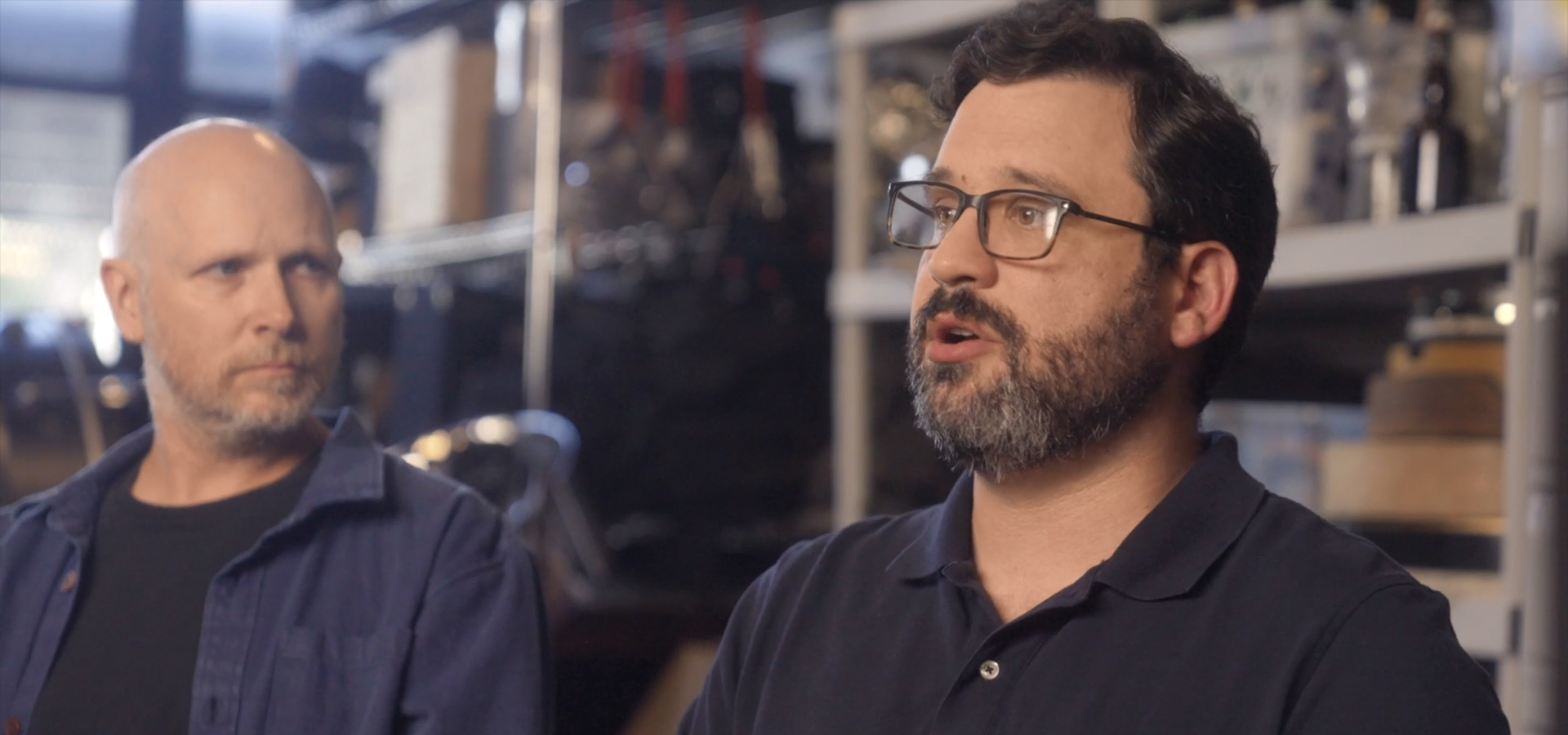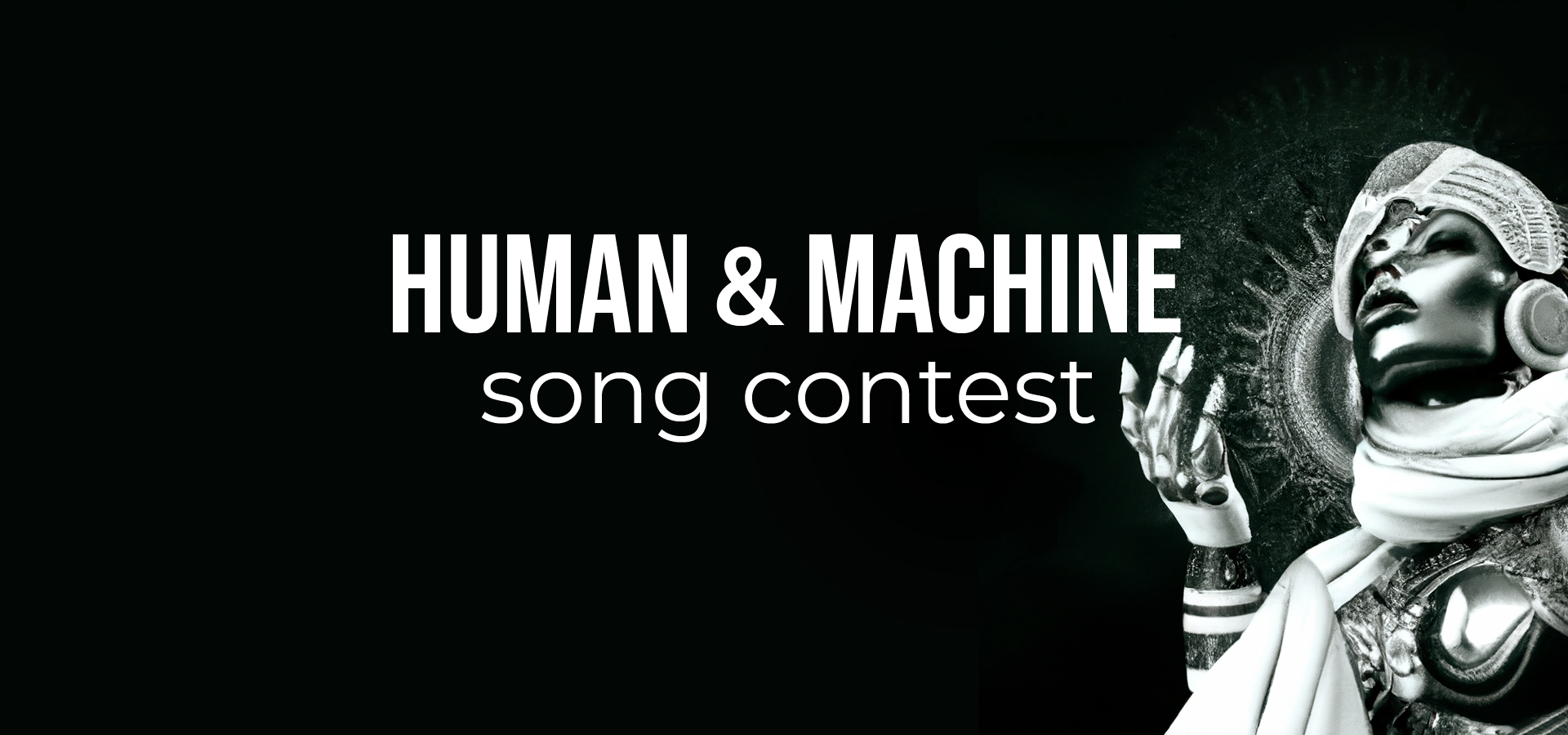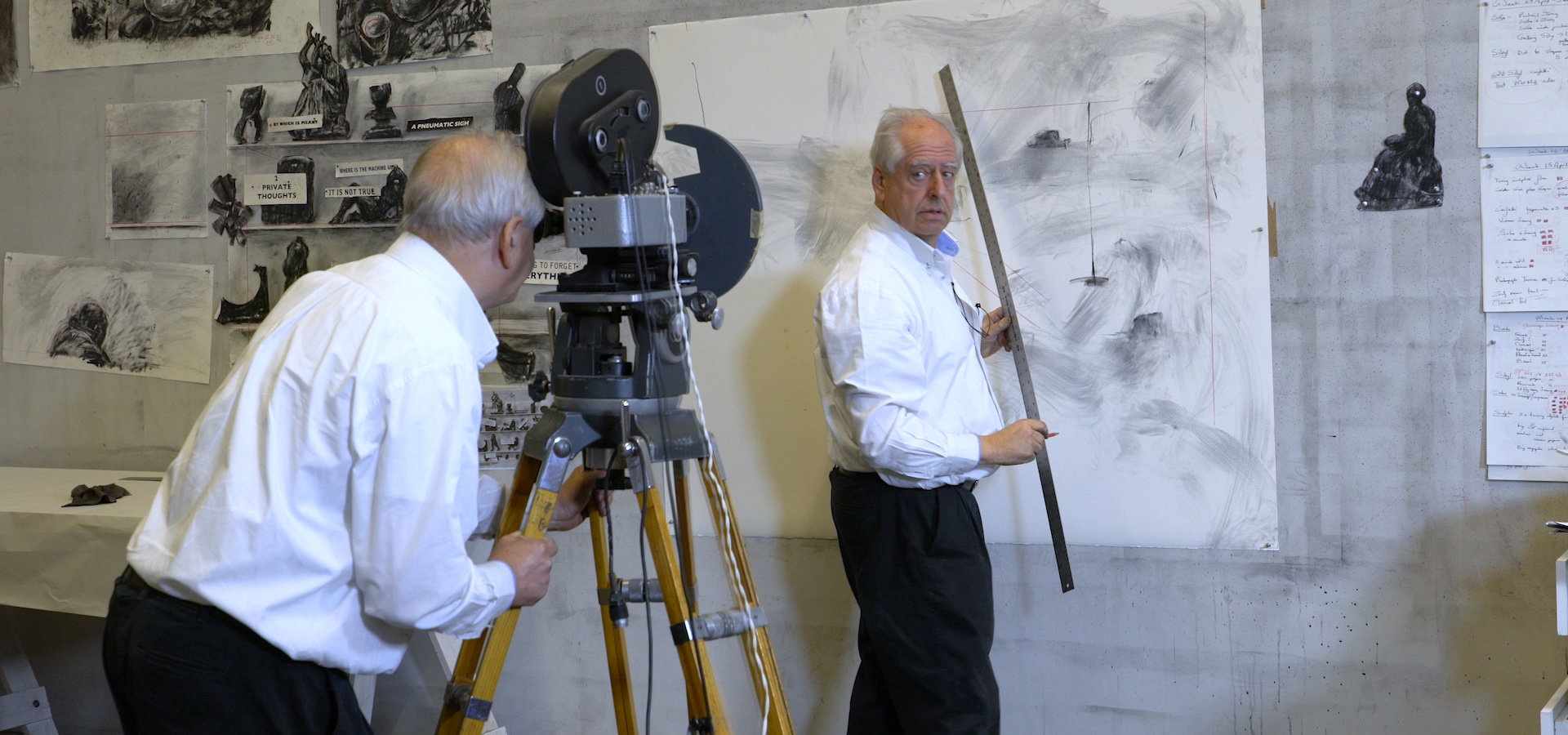
“Human and Machine”: The Instrumentalist & the Instrument Maker
“The instrument becomes a channel, too, and that’s the sense in which it’s alive.”
Featuring computer scientist, composter, artist, and author Jaron Lanier; and Cal Performances 2022/23 Illuminations artists Sō Percussion and Kristian Bezuidenhout. Video created by Cal Performances’ Director of Education, Campus & Community Engagement, Mina Girgis.
In this second video expounding on the 2022/23 “Human and Machine” Illuminations theme, we asked Illuminations artists and thought leaders about their relationships with the makers of their instruments.
Transcript
Jaron Lanier:
I sort of feel like if instrument makers ran the world, everything would just be smooth and it would be like, everything would make sense.
Adam Sliwinski (Sō Percussion):
I think the audiences at Cal performances will see how, for us, technology is part of a fluid spectrum of soundmaking and experimentation.
Kristian Bezuidenhout:
He says famously, ‘The piano should break,’ you know… Beethoven was wanting to sort of stretch the instrument to its maximum capacity and limits.
Jaron Lanier:
Well, so this is a question: ‘Why are we not just singing?’ ‘Why do we have instruments?’ And there are a few reasons for that. I mean, in a way you could say instruments are the ancient autotune because people don’t sing that well, that’s one. And I think, in a sense, we can think of musical instruments as being like masks in that if the voice would be the fully unmasked person then the instrument is the masked version, which takes away and gives at the same time.
Adam Sliwinski (Sō Percussion):
The way that we think about expanding the color palette of sound through percussion, I would say for all of us comes from two things: One, which is just the sort of natural experimentation that we all intuitively go about. When audiences come in to hear our shows, they immediately relate to the idea of ‘oh, you can try doing this with that, you can try doing that with it.’
The other thing for us is that our lineage as a percussion ensemble is not only to play drums and those kinds of instruments together, but it comes from artists like John Cage and Pauline Oliveros and many others who explicitly—Edgar Varèse—explicitly wanted to expand the resources of music coming out of the concert hall and orchestra culture and those things using percussion to just explore all kinds of ways of making sound—intuitive playfulness, the kind that anybody who’s never even heard of John Cage could get excited about.
Kristian Bezuidenhout:
Does Mozart invent this or does the piano tell him to do this. And when does he change that? Does he change it? Is he happy with it for 15 years? Mozart sets the piano on this path of incredible explosive change. I think arguably one of the most remarkable moments of the stars aligning for Mozart is the E-flat major piano concerto K271, the ‘Jenamy’ or ‘Jeunehomme,’ and this is a piece I think is a fantastic example of Mozart realizing the sort of unfulfilled potential of every element in the recipe: the piano, the orchestra, the kind of stylistic aesthetic language that he sort of transcends and uniquely invents overnight in the concerto form as well.
And I think it’s safe to say that the Stein piano of the late 1770s—that is the source of inspiration for this—unlocks a kind of unparalleled new level of creativity in Mozart. And it’s really fascinating to see that in a piece like the C Minor “Fantasy” of Mozart, he unlocks kind of coloristics, sonic potentials in the instrument that were undreamt of I think and that really appealed to Beethoven.
I think probably people felt that Mozart was onto something and then Beethoven, in his kind of eccentricity and madness, takes it so many steps further, you know. He says famously, ‘The piano should break’…. Beethoven was wanting to sort of stretch the instrument to its maximum capacity and limits, almost to the point of grotesque ugliness, something that Mozart never really ever does.
What is the relationship between the instrument builder and the composer?
Jaron Lanier:
Musicians will talk among ourselves and say, ‘Oh my God, this maker of whatever it is, drums or guitars or something, they’re so amazing!’ Like, ‘Here,’ you know, ‘try this thing like, oh my God, this is incredible. This goes beyond anything I’ve ever played.’ And we’re like, ‘Oh my God, this person must be like some sacred guru or something.’ Then you go visit them and not always but almost always, the attitude of the instrument maker is kind of like very workaday and concrete, like they’re car mechanics. Like, ‘I just want to make things work here. This is a job. I’m gonna do the job well,’ and that’s it, you know, end of story.
It’s very simple and we’re like, ‘Wait a second, but you’re this transcendent guru and you’re just talking like you’re like a mechanic.’ It’s almost always the case that the best instrument makers are incredibly humble and incredibly workaday. I tend to think they just don’t realize how special they are.
Kristian Bezuidenhout:
Part of the sort of einsteilung of the best builders, the sort of mindset of these people in the 1780s, 1770s, especially, is they’re going to bed at night thinking, ‘Okay, what’s going on now? What is it that my instrument needs to offer that’s gonna really set it apart from the competitors? And what if Mozart—I’ve heard he’s really good—what if he walks in the door tomorrow and comes to my workshop? What do I need to impress him with?’ And I think these people like Stein at that point in the 1770s, they just have a sense of what’s in the air and the kind of zeitgeist and the demands for a piece of equipment that’s going to be on the best level for portraying and bringing this new music to life.
Jaron Lanier:
I have always wanted computers to get as good as instruments, you know. You’d like a computer to have this feeling of transcending what it is and most people in computer culture want that to happen, but they want it in the sense that they want the computers to come alive and become creatures. The way they wanted to happen, it’s sort of like womb envy where it’s like, ‘Oh, we’re creating life,’ and the way it happens with instruments is different.
Most great musicians come to believe that they aren’t like sort of ego sources of music, but rather they’re channels. And in that sense, the channel—the instrument becomes a channel too, and that’s the sense in which it’s alive. Whereas I think there’s too much of a problem in technology of like, ‘I’m the inventor. I’m the great entrepreneur. I’m this. I’m the great scientist. I’m the great hacker,’ or whatever and so there’s this ego in it, and then they want the computers to have egos too, which is I think exactly the wrong thing. That’s really not not what you want.
And I think it’s been a bit of a problem in a lot of music technology lately where, at least to my ears and to my sensibility, a lot of the tools people used to make music are a little too imposing where it’s like, well, this is the way you do loops and this is how you autocorrect this and this is where you get your library of sounds, and it’s almost like the musician becomes a consumer of a product instead of a creator or it gets to be an awfully blurry distinction.
And I know, you know, it’s not my job to be just judgmental about how other people make music, so in a way I immediately feel that I shouldn’t have said that, but there is this kind of weird thing of like, do you want your instruments to come alive as he goes or as channels? Right? And I think channels is the better way and that’s what we’re missing in the digital world.
Jason Treuting (Sō Percussion):
If I really like thinking of this triangle, this instrument maker-composer-performer triangle, and one thing I feel like we try to complicate in that relationship is the way ideas are transmitted from composer to performer. I think oftentimes when a technology is made, let’s say the piano as a technology, you kind of define a way that that music is notated, and then the composer can transmit those ideas to a performer, and it’s a really elegant language and a really deep language and a really facile and fast language, but it’s also not the only language, and as soon as you make a language, you kind of inherently leave out all these other ideas.
And so, in the music that we’re playing in Cal Performances next season, of the five or six different composers we’re working with, all of that music was transmitted in all different ways. Even within a piece of music, there are different ways that an idea is transmitted. Of course, we read notated music in a Western classical tradition, but orally transmitting ideas, talking about trial and error, the workshop process, all kinds of different notated processes—for me as a composer, I try when possible to say things like, ‘Let’s have a sound that sustains’ as opposed to saying, ‘I need an organ,’ or, ‘I need a string quartet,’ you know; or, ‘Let’s have a bright sound,’ which could mean symbol or pipe or triangle or, you know, harp. Like, trying to open up the way you classify instruments feels like it’s a really easy way to open doors, and actually the array of music we’re playing next year is really wonderful like that.



